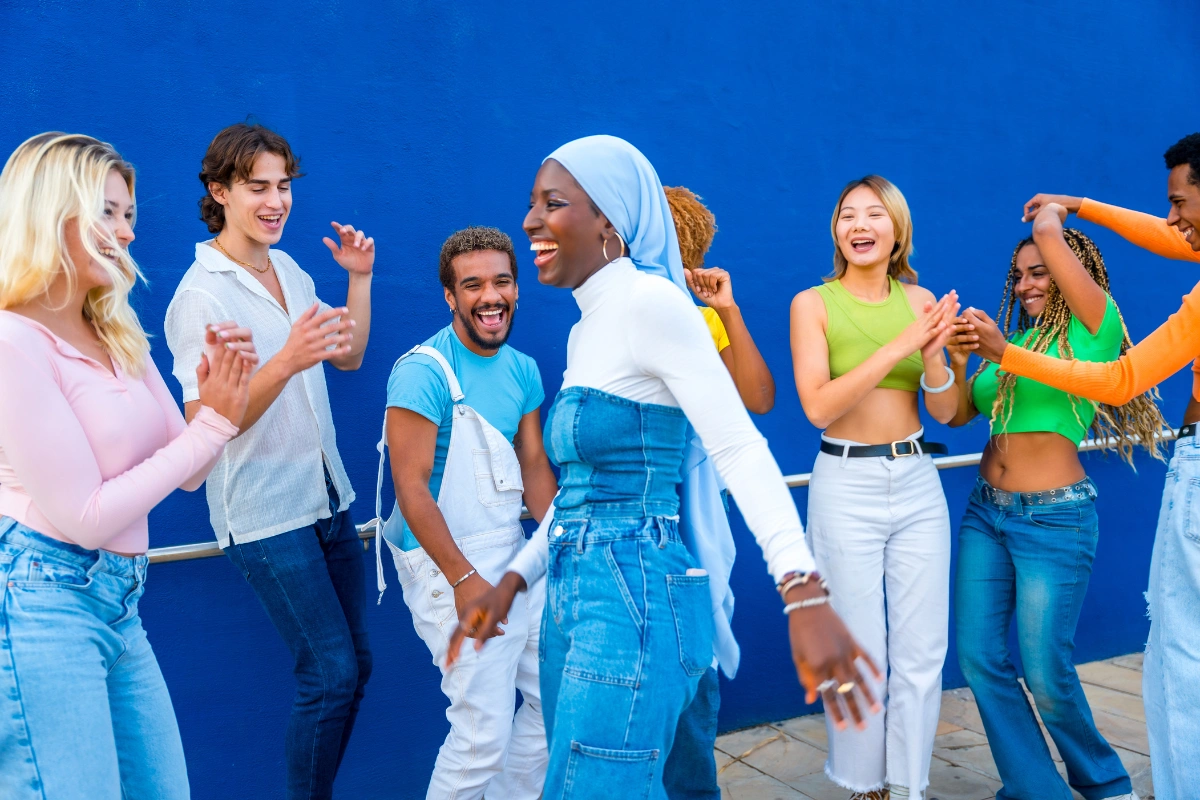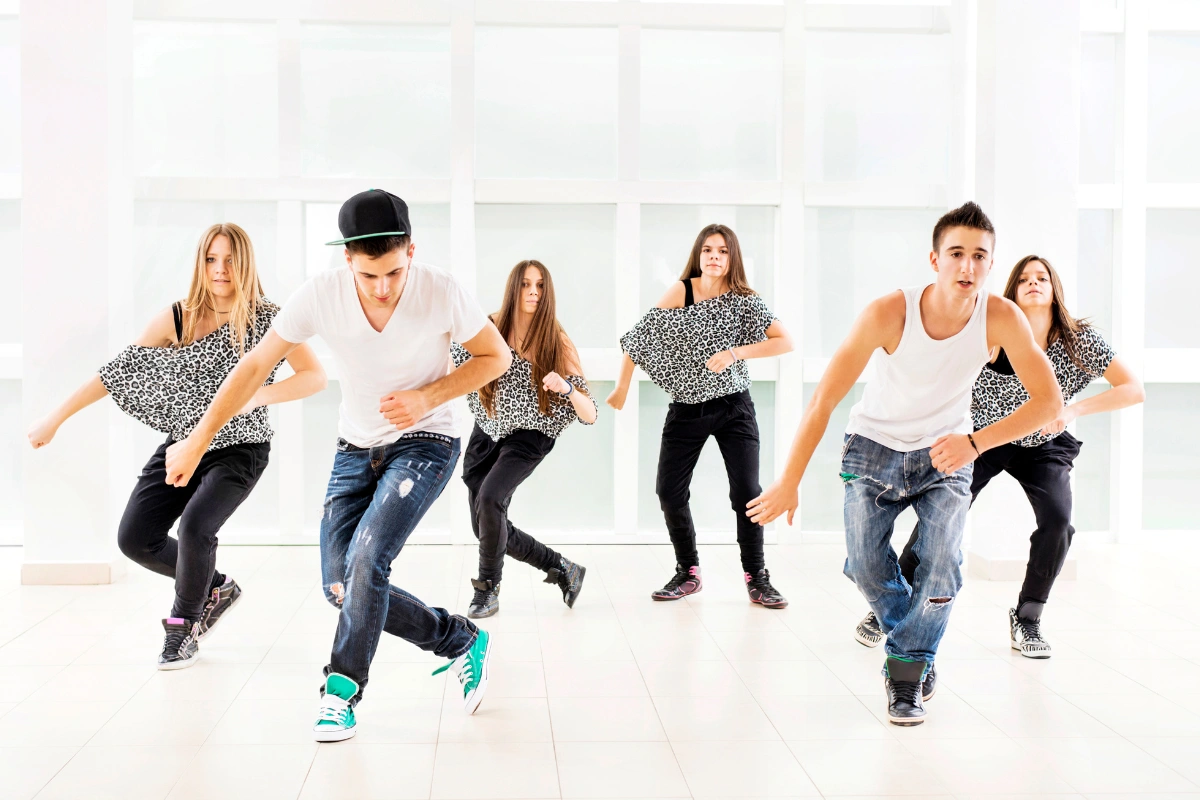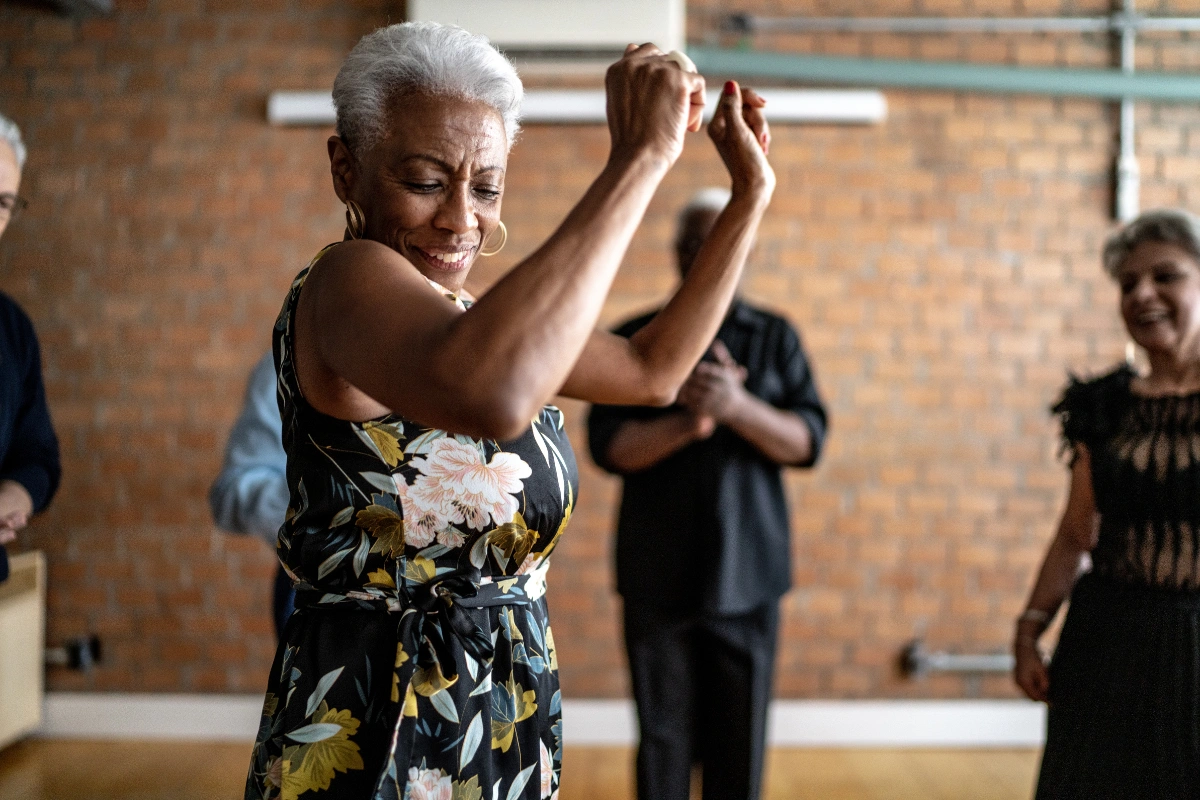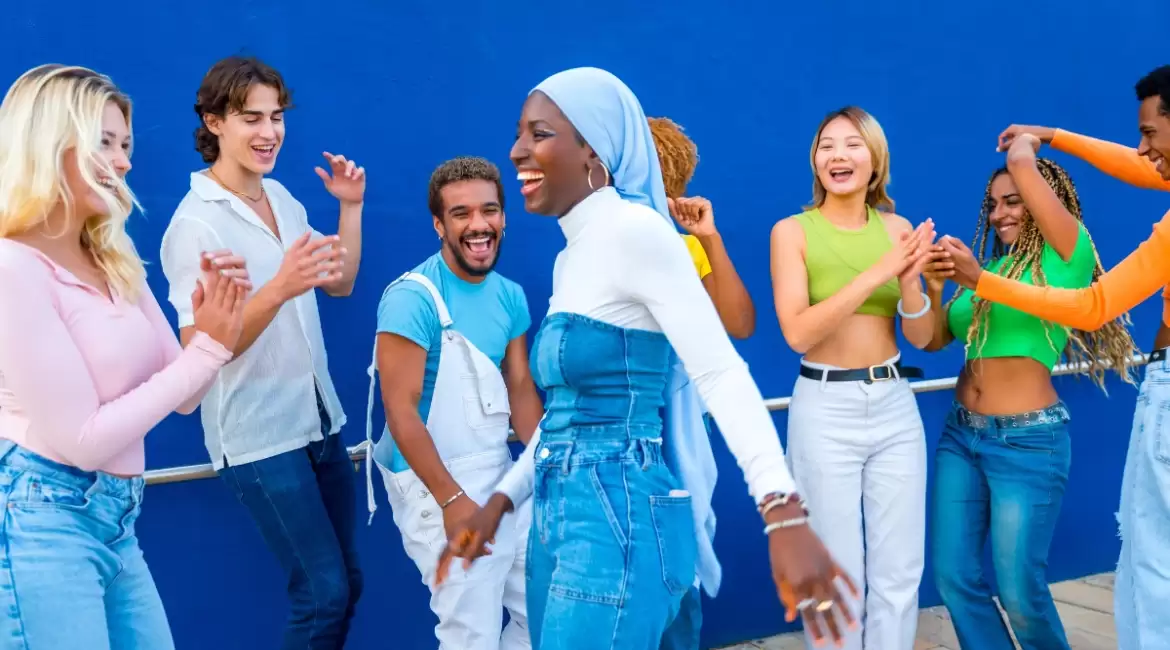A dance battle stands as a cornerstone of urban dance culture, embodying a dynamic fusion of athleticism, artistry, and cultural expression. Emerging from the streets of New York City during the birth of hip hop in the late 1970s and early 1980s, these battles were initially spontaneous gatherings where dancers showcased their skills in impromptu exchanges. Over time, they evolved into structured competitions that showcase a spectrum of styles including breakdancing, hip hop, popping, house dance, and more.
What distinguishes a dance battle is not just the technical proficiency displayed but also the creativity and individuality expressed by each dancer. Participants face off on designated dance floors, taking turns to perform and respond to their opponents, often under the scrutiny of judges who assess their execution, musicality, originality, and overall impact. This competitive environment fosters a spirit of innovation and camaraderie among dancers, as they push the boundaries of movement and style.
From grassroots beginnings, dance battles have grown into global phenomena, with major events like Red Bull BC One, Juste Debout, and the Olympic Games now featuring them prominently. These battles not only elevate the art form but also provide a platform for dancers to gain recognition, build community, and inspire future generations. More than just a contest, dance battles encapsulate the evolution of urban dance as a cultural force, celebrating diversity, creativity, and the enduring spirit of competition in the world of dance.

What is a dance battle?
A dance battle is a competitive event where dancers confront each other to showcase their dance skills on a designated floor. These battles typically involve dancers taking turns to demonstrate their abilities, often in formats like 1 versus 1, 2 versus 2, 3 versus 3, 4 versus 4, or in larger group settings known as crew battles, which can include formations of 5 to 10 dancers or more.
There are two main types of dance battles:
- All-Style Battles: In these competitions, dancers draw from a variety of street and urban dance styles such as breakdance, hip hop, popping, house dance, and locking. The music played during all-style battles is generally versatile, catering to the diverse genres represented.
- Style-Specific Battles: Alternatively, some dance battles focus exclusively on a single dance style, such as breakdancing. In these events, the music is specifically chosen to complement and enhance the particular style being showcased.
Dance battles are not only about demonstrating technical prowess but also about creativity, musicality, and the ability to engage and entertain both judges and spectators alike.
History of dance battles
The history of dance battles traces back to the emergence of hip hop culture in the late 1970s and early 1980s, particularly in New York City, where breakdance battles became a prominent feature of neighborhood gatherings and parties. Initially spontaneous, these battles often took place during street parties or impromptu training sessions in parks, where dancers would engage in extended exchanges, sometimes lasting over 10 rounds.
What is hip hop? Hip hop is a multifaceted cultural movement that originated primarily in African American and Latino communities in the South Bronx of New York City during the 1970s. It encompasses various elements, including rap music (MCing), DJing, graffiti art, and breakdancing (B-boying/B-girling).
At its core, hip hop culture is characterized by its emphasis on self-expression, creativity, and social commentary. Rap music, with its rhythmic spoken lyrics over beats, often addresses social issues, personal experiences, and cultural identity. DJs play a crucial role in hip hop by mixing and scratching records to create new sounds and rhythms, while graffiti artists use visual art to make statements and adorn urban spaces.
Breakdancing, or B-boying/B-girling, is a dynamic form of dance that emerged alongside hip hop music. It involves intricate footwork, acrobatic moves, and freestyle improvisation, often performed competitively in dance battles.
Hip hop culture has expanded globally, influencing music, fashion, art, and dance worldwide. It serves as a platform for marginalized voices to express themselves and address social issues such as racism, inequality, and urban life. Over the decades, hip hop has evolved and diversified, with new subgenres and styles continually emerging while retaining its foundational principles of creativity, authenticity, and community.

As the popularity of breakdancing grew, organized battle events began to take shape. These were typically small-scale competitions held in community centers, parks, and occasionally nightclubs, providing local breakdancers with platforms to showcase their skills in formalized competitions. Participants could register and compete, fostering a competitive yet community-oriented atmosphere.
The global spread of dance battles accelerated with key events like the legendary face-off between Rock Steady Crew and New York City Breakers, famously depicted in the 1984 film “Beat Street.” This marked a pivotal moment when battles became not just integral to breakdance culture but to all urban dance styles.
Into the 1990s and 2000s, dance battles expanded in scale and popularity. Events like The Notorious IBE and Red Bull BC One gained international renown, drawing large numbers of dancers and audiences alike. This burgeoning interest culminated in breakdancing being recognized as an official sport at the 2024 Olympic Games in Paris, underscoring its evolution from underground cultural phenomenon to mainstream athletic competition.
How does a dance battle work?
A dance battle follows a structured format designed to showcase the skills and creativity of participating dancers. Typically, the event begins with a qualifying round where all participants have the opportunity to perform a showcase round or a showcase battle. Each dancer is given a chance to dance once, sometimes twice, allowing judges to evaluate their abilities and determine who progresses to the next stage.
Following the qualifying round, the knockout battles commence. In this phase, dancers are paired off against each other, and the winner of each battle advances to the subsequent round. Typically, the initial field of participants is narrowed down to 16 dancers, resulting in 8 battles and 8 winners. This progression continues through the semifinals, where only 4 dancers remain. The winners of the semifinals then compete in the final round to determine the ultimate champion.
In larger competitions, such as those with numerous participants, organizers may expand the bracket to a top 32 from the qualifiers. To ensure fairness and excitement, organizers often strategically place the top 4 highest-rated qualification rounds in different corners of the battle bracket. This setup increases the likelihood that the highest-rated dancers will face off in the semifinals, adding to the competitive intensity and audience engagement.
During a dance battle, each round typically consists of 1 to 5 exchanges, where one dancer performs and the opponent responds in turn. This format not only highlights individual skill and improvisation but also encourages interaction and spontaneity between competitors, creating a dynamic and engaging spectacle for both participants and spectators alike.
Dance battles at the Olympic Games
Breakdancing, or breaking, has been introduced as a new sport at the 2024 Olympic Games, marking a significant milestone in its journey to mainstream recognition. This inclusion is expected to significantly boost the visibility of breakdancing among a global audience. However, the structure of dance battles at the Olympic Games differs somewhat from traditional formats.
What are 2024 Olympic Games? The 2024 Olympic Games, officially known as the Games of the XXXIII Olympiad, represent the next edition of the Summer Olympic Games and are scheduled to be held in Paris, France. This prestigious international sporting event is set to take place from July 26 to August 11, 2024, and will bring together athletes from across the globe to compete in a diverse array of sports disciplines.
Organized by the International Olympic Committee (IOC), the Olympic Games are renowned for promoting unity, sportsmanship, and excellence in athletic competition. Athletes participate in events ranging from track and field, swimming, and gymnastics to team sports such as basketball, football (soccer), and volleyball. Each sport showcases the pinnacle of human physical prowess and dedication, with competitors aiming to achieve personal bests and national glory on the world stage.
One of the highlights of the 2024 Olympics will be the inclusion of breakdancing, also known as breaking or B-boying/B-girling, as an official sport. This marks a significant moment for urban dance culture, as breakdancing will make its Olympic debut alongside more traditional sports. The decision to include breaking reflects the IOC’s commitment to embracing new and diverse sports that resonate with younger audiences and showcase the cultural impact and universal appeal of hip hop and street dance.
Paris, known for its rich history, iconic landmarks, and vibrant culture, will provide a spectacular backdrop for the Games, with venues spread across the city and its surrounding regions. The 2024 Olympics will not only celebrate athletic achievement but also promote cultural exchange and international cooperation among nations.
As preparations continue, athletes and fans alike eagerly anticipate the opportunity to witness world-class competition, unforgettable moments of triumph and camaraderie, and the crowning of champions in the heart of one of the world’s most iconic cities during the 2024 Olympic Games in Paris.

The competition begins with the qualifying rounds, where each bboy or bgirl participates in a battle round. The results from these rounds determine the matchups for the subsequent rounds. The lowest-ranked performer faces off against the highest-ranked, the second-lowest against the second-highest, and so on. Thus, performance in the qualifying round not only determines progression but also influences the difficulty of opponents in subsequent rounds.
Following the qualifiers, the top 32 dancers advance to the next phase. Here, participants engage in battles consisting of two rounds each, with judges rating their performances. The top 16 highest-rated dancers from these battles proceed to the round robin stage.
The round robin phase features 4 pools, each comprising 4 breakdancers. Within each pool, every dancer competes against the other three in battles consisting of two rounds each. This results in each participant engaging in three battles. The top two performers from each pool then advance to the top 8 battles.
In the top 8 battles, all dancers compete in a knockout format over three rounds. The winner of these battles advances to the top 4. The two winners of the top 4 battles then compete for the gold and silver medals, while the losers compete for the bronze and fourth place.
This structured progression ensures that while individual battles are crucial, overall consistency and performance throughout the competition stages are equally vital to success at the Olympic level. The format not only showcases the skill and creativity of breakdancers but also intensifies the competitive spirit and drama for both participants and spectators alike on the Olympic stage.
Judges at dance battles
At dance battles, judges play a crucial role in determining the winners of each competition. These judges are typically selected based on their esteemed status within the dance community, often chosen for their diverse styles and preferences.
Typically, a dance battle features three judges, each renowned for their distinctive expertise. For instance, one judge might be celebrated for their mastery of a specific dance style, while another is recognized for their proficiency in executing dynamic, high-impact moves such as power moves, tricks, and flips. The third judge may possess a well-rounded background in breakdancing or represent the traditional, old-school style. Occasionally, events may opt to include more than three judges to ensure a balanced evaluation across different dance styles and criteria.
Many dance battles incorporate a judge demo as part of their proceedings. During this segment, all judges showcase their dance skills on stage. This practice is valued by numerous dancers as it holds judges accountable for their own abilities and ensures they remain connected to the art form. However, there are dissenting voices within the community who argue that a judge’s effectiveness should be assessed primarily on their ability to impartially assess performances rather than their own dance prowess.
Organizers often prioritize securing well-known dancers as judges for their events. This not only lends credibility and prestige to the competition but also enhances the excitement for spectators, who anticipate witnessing spectacular performances during the judge demo. This emphasis on selecting judges who are both respected in their field and capable of providing fair and insightful evaluations underscores the importance of judging integrity in dance battles.
How do judges choose a winner?
In traditional knockout battle rounds, judges play a pivotal role in determining the winner after each intense dance exchange. The process typically unfolds with the battle’s host or MC counting down—3, 2, 1—after which judges physically gesture towards the dancer they believe performed better. A majority vote from the judges determines the winner. Occasionally, judges may cross their arms, signaling a tiebreaker where they cannot reach a unanimous decision on the superior dancer.
For example, in a scenario with three judges, if one judge calls for a tiebreaker, one points left, and another points right, it signifies a draw. In such cases, both dancers are required to engage in an additional round, known as the tiebreak round. After this round, judges vote again to definitively determine the winner.
Traditionally, judges and the audience observe the entire battle before deliberating and deciding the victor. However, this method has inherent challenges, such as judges potentially being influenced more by the final round rather than considering the entire performance. To address these issues, alternative judging systems like the Kozen judging system have been devised. In this system, judges evaluate and choose a winner after each round, with a live scoreboard displaying scores for transparency.
Given breakdancing’s inclusion in the Olympic Games, a specialized judging system has been developed. Olympic judges assess dancers based on five key criteria: Technique, Execution, Originality, Vocabulary, and Musicality. Each judge uses a tablet equipped with a crossfader for these criteria. After each round, judges compare and score dancers on each criterion, and these scores are displayed for contestants and the audience to see. Additionally, judges have access to three buttons for penalizing behaviors: the Misbehavior button for disrespectful conduct, the Bite button for blatant imitation of others’ moves or styles, and the Crash button for instances where a dancer falls during a move.
To ensure consistent and fair judging at the Olympics and its qualifying events, all judges undergo comprehensive training and certification courses. This rigorous preparation ensures that judges are well-equipped to assess performances accurately and uphold the integrity of competitive breakdancing on the global stage.

Biggest dance battles
Some of the most renowned urban dance battles around the globe attract dancers and enthusiasts alike, showcasing exceptional talent and creativity:
- Juste Debout: Known for its emphasis on authenticity and skill, Juste Debout celebrates various street dance styles with participants from all over the world.
- Summer Dance Forever: Held annually in Amsterdam, Summer Dance Forever is a vibrant celebration of street dance culture, featuring battles, performances, and workshops.
- Red Bull BC One: Organized by Red Bull, BC One is a prestigious one-on-one breakdancing competition that culminates in a global final, highlighting the best in breakdance talent.
- The Notorious IBE: Taking place in the Netherlands, The Notorious IBE is renowned for its inclusive atmosphere and diverse dance battles, attracting top dancers and crews.
- Battle of the Year: Originating in Germany, Battle of the Year is one of the longest-running and most prestigious international breakdancing competitions, featuring crew battles.
- UK B-Boy Championships: Held in the United Kingdom, this event showcases the best breakdancers and hip hop dancers from across Europe and beyond.
- Freestyle Session: A series of events held globally, Freestyle Session is known for its dynamic battles and showcases in various street dance styles.
- Olympic Games 2024: As breakdancing debuts as an official sport at the 2024 Olympic Games in Paris, it marks a historic moment for urban dance, bringing worldwide attention to the discipline’s athleticism and artistry.
These events not only provide platforms for dancers to compete and showcase their skills but also serve as cultural milestones that promote the global growth and appreciation of urban dance forms.

Summary
A dance battle is a cornerstone of urban dance culture, originating in the vibrant streets of New York City during the emergence of hip hop in the late 1970s and early 1980s. Initially spontaneous and informal, these battles quickly evolved into structured competitions that showcase a wide range of styles, including breakdancing, hip hop, popping, house dance, and locking.
What sets dance battles apart is not just the technical prowess displayed by participants but also the creativity, improvisation, and cultural expression they bring to the floor. Dancers engage in back-and-forth exchanges, responding to each other’s moves while aiming to impress judges and captivate audiences with their skill, musicality, and stage presence.
Over the decades, dance battles have transcended their grassroots origins to become global phenomena. Events like Red Bull BC One, Juste Debout, and The Notorious IBE attract top dancers from around the world, competing for prestige and recognition. These battles not only provide a platform for showcasing talent but also foster a sense of community and camaraderie among dancers who share a passion for urban dance culture.
In recent years, the inclusion of breakdancing as an official sport in major events such as the Olympic Games highlights its growing mainstream appeal. The Olympics have introduced specialized judging criteria that evaluate dancers on technical proficiency, execution, originality, vocabulary, and musicality, underscoring the artistry and athleticism inherent in the discipline.
Beyond competition, dance battles serve as cultural milestones, celebrating diversity, innovation, and the evolving nature of urban dance. They continue to inspire and influence new generations of dancers, pushing the boundaries of what’s possible in movement and performance. As urban dance culture continues to thrive globally, dance battles remain at the forefront, embodying the spirit of creativity, community, and competitive spirit that defines this dynamic art form.


Leave a reply